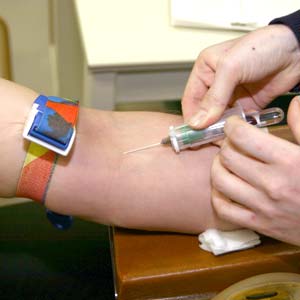A fairly new blood test called PSA has been given a lot of publicity as a method of early diagnosis of prostate cancer. There is more to it than that, and understanding this test and its significance is important.
When a doctor does a PSA test, he wants to know how much PSA there is. Think of the PSA in the blood as if it is ‘leaking’ out of the prostate More PSA will come from a large prostate than a small one, so as you get older the amount of PSA can increase as the prostate enlarges.
Some diseases of die prostate cancer make it more ‘leaky’ and in this case the amount of PSA is even higher. This happens with cancer of the prostate and is the reason why the test can be used to look for cancer. Other diseases of the prostate also make it more leaky, for example, the PSA may be high when the prostate is infected. It also goes up after a prostate operation, or even simply following a cystoscopy examination or having a catheter passed.
As older men have larger prostates and also more have non-cancerous diseases of the prostate such as prostatitis, the average PSA is higher in men of 75 than in men of 55. So if your PSA is higher than ‘normal,’ it does not mean you have prostate cancer. You might have, but it is more likely that you have BPH, or that something else has happened to push up the amount of PSA in your blood.

As a test for cancer, PSA is helpful but the results have to be interpreted carefully. In technical terms, it is not very specific and it gives a lot of false positives – results that seem to indicate cancer but that on further investigation do not. If PSA is very high, this does usually mean there is cancer. If it is only a little bit raised, the size of the prostate and any other conditions affecting the prostate must be taken into account. It will certainly be necessary to do more tests before cancer can be diagnosed.
The diagnosis is usually confirmed by taking some small pieces of prostate (biopsies) with a needle, usually when a transrectal ultrasound (TRUS) is done. Sometimes this can cause infection in the urine or even the bloodstream. More importantly, the biopsy might miss the tumour, so a negative biopsy can give a false picture. This means that, even if the biopsy is negative, it is usually necessary to have further PSA checks and even another biopsy. It can be very difficult to be completely certain that a raised PSA is not caused by cancer.
PSA and Cancer
In a man who is found to have prostate cancer, the amount of PSA is a good guide to the extent of his disease, and helps in deciding how he should be treated. If the PSA is normal (and one problem is that cancer of the prostate can have a normal PSA), or only slightly raised, it is unlikely that the tumour has spread significantly and this is reassuring. At the other extreme, a very high level of PSA is sufficient to make a diagnosis of cancer of the prostate and, in these circumstances, it is often possible to save the patient the discomfort and the delay of having further tests done and arrange for his treatment to be commenced as soon as possible. Successful treatment of cancer of the prostate will lower the PSA, and regular checks on the amount of PSA in the blood are an important part of the follow-up.
